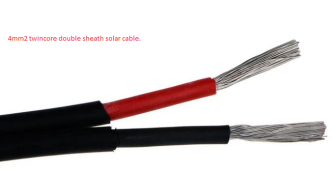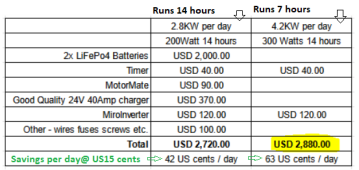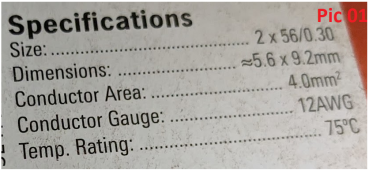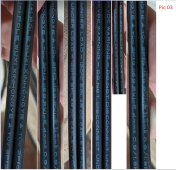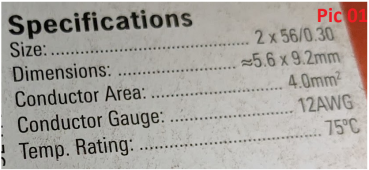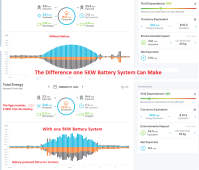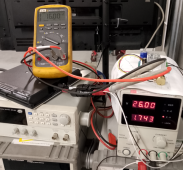The fact that you’ve already had two years of success running in this manner is already standing up to any scrutiny that you need to worry about.
Much Appreciated.
There are two questions everyone is interested in:
1/ are the fears of damage to typical Microinverters when powering direct from battery unfounded? We won’t know the answer to that question definitely until we get some stories of failure among the several members attempting to follow in your footsteps (including me).
OK. I hope their fears are unfounded especially if they operate at the lower end of the operating range.
I am keen to see others test this.
I will try to test others also.
Maybe we should have a list of MicroInverters tested so others can see results on each type.
In the meantime, question 2 is related to particularities of the way you’ve built your rig which might have reduced or eliminated the risks most are worried about (which again, are not validated at this stage).
OK...
Your suggestion about resistance of your relay is a good one - knowing whatever specification it has for contact resistance along with the estimated + and - wire lengths of 4mm / 6 AWG wire you are using to connect between battery and Microinverter will help figure out what maximum inrush current you might be getting.
Details at the end of this reply.
It’s amazing what impact as little as 10mOhms can have on inrush current…
I am staring to get a grip on this.
By the way, you said 4mm wire but I assume that means standard 6AWG wire, correct?
That is correct.
So with regards to protecting the battery vs the inverter/other electronics.
- The battery should be pretty fine with just regular battery fusing - that would protect against catastrophic short inside the inverter if something bad blows up.

- However, a fuse will not directly protect the inverter (though adding some series resistance might provide some protection).
Working out resistor sizes is not my forte.
An interesting comparison here would be where a GTIL would make sense, and where a microinverter would make sense. I doubt any of the GTIL are up to modern grid spec (but they're probably fine for 2011 grid spec), and they have a bit more configuration flexibility with how much power they put out. It's easy to get microinverters for any modern grid spec you want, however they are natively limited to pushing out the max power unless you get one with export limiting features, which adds a decent chunk of expense. For Hoymiles about $300 if you just want to set % of maximum output, and $900 if you want automatic export limit.
I would not do the GTIL - it adds too much complexity for what you pay IMO.
There are a lot of cheap second hand MicroInverters out there - I pay on average US $27 each for them & all mine are brand new.
At this stage it
is miles cheaper to replace the MicroInverter - if one blows up IMO.
Already we are talking about switching on the AC side & ostensibly the MicroInverter will be subject to very few hits of inrush current and last much longer.
In Australia there are a number of factors for cheap MicroInverters as I see it.
1. Huge solar farms seem to be swapped out at the 10 year mark some of these have 100's of MicroInverters for sale - cheap.
2. Companies seem to buy a large excess of MicroInverters and have 100's of new ones left over which they dump.
3. There have been a lot of advancements E.G. IQ8 so, older models, even if new, are dumped.
4. Users are being convinced to change to string inverters.
I am not sure how your export limit works in the US ours is 5KW per household in Australia.
So I have two fan heaters stationed outside that I can set to pull 1.2KW, 2.4KW, 3.6KW or 4.8KW and pump out hot air.
During the hot months I set the Wi-Fi timer to burn 1.2KW for 4 hours during the middle of the day.
All the rest of the burning capacity, I have, is just backup.
I never export more that 3KW on any day.
I plan to use that energy so I don't just waste it. (Gas heater to electric, electric car ETC.)
This is another one of my working rules:
Produce as much solar power as you can. (cheaply) Worry about using it later.
So I have 8 more old panels & railing bought for USD $135 to put up.
I keep adding where / whenever I can.
